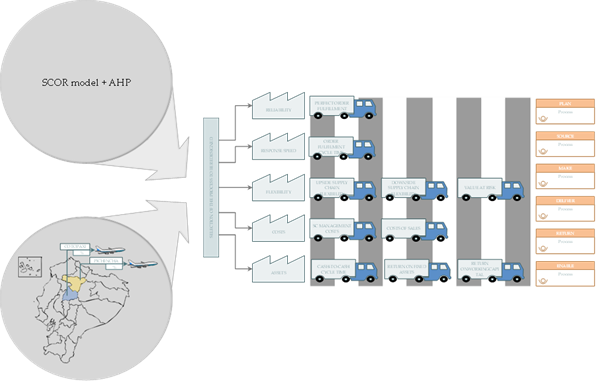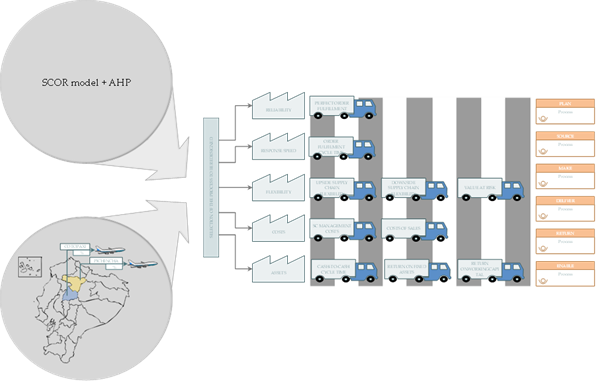Management improvement of the supply chain of perishable agricultural products by combining the Scor model and AHP methodology. The ecuadorian flower industry as a case study
DOI:
https://doi.org/10.48162/rev.39.084Keywords:
AHP, SCOR, supply chain, agri-food, managementAbstract

This research aims to identify and propose an analysis and redesign methodology for Supply Chain (SC) processes, leading to better performance and financial results. Our study focuses on the Ecuadorian flower industry redesigning processes and allowing higher levels of competitiveness. The methodology here proposed combines the SCOR (Supply Chain Operation Reference) and a Multi-Criteria Evaluation methodology, the Analytic Hierarchy Process (AHP). The SCOR model allows mapping and describing the supply chain. By consulting with experts, the AHP helps examine and select decisive chain operational aspects for successful performance allowing redesign. According to the proposed methodology and expert consultation, those metrics, attributes, and processes with lower weight, should be improved. Although few research articles have applied the SCOR and AHP models to the agricultural sector, this study on the supply chain of the Ecuadorian floriculture sector leads us to conclude that model combination is a suitable methodology for supply chain analysis of any perishable product and, more specifically, the flower industry.
Highlights
- Supply chain (SC) management is a crucial and decisive element in improving efficiency, productivity, and overall distribution and sale process.
- In perishable and temperature-sensitive products, like flowers, supply chain management (SCM) is imperative for avoiding financial losses.
- SCOR (Supply Chain Operation Reference) is a good model to measure SC performance.
- AHP helps examine and select decisive chain operational aspects for successful performance allowing redesign.
Downloads

Downloads
Published
How to Cite
Issue
Section
License
Copyright (c) 2018 Revista de la Facultad de Ciencias Agrarias UNCuyo

This work is licensed under a Creative Commons Attribution-NonCommercial-ShareAlike 3.0 Unported License.
Aquellos autores/as que tengan publicaciones con esta revista, aceptan las Políticas Editoriales.










.jpg)




